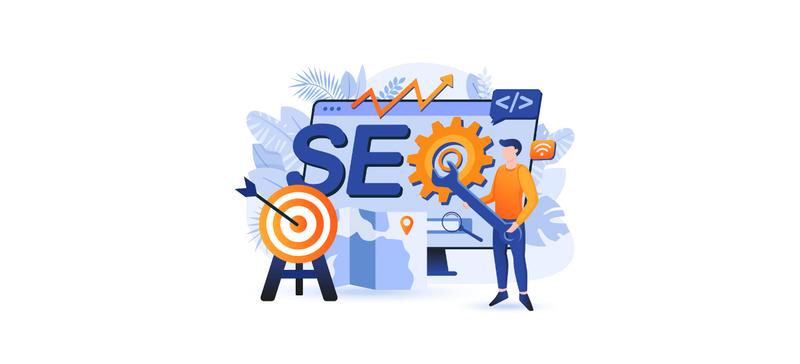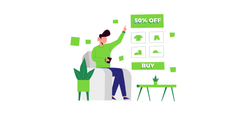Whether you’re just launching an e-commerce store or trying to grow traffic to an existing website, you’ve likely asked yourself: how do I appear in Google?

Search Engine Optimization (SEO) is a key marketing channel you need to understand in order to create content with a higher chance of ranking on Google.
In this complete guide, we’ll walk you through essential on-page, technical, and external SEO strategies that can help your store rank higher in Google Search, drive more organic traffic, and convert visitors into customers. Everything here applies whether you’re using a website builder or hosting your store with a platform like Jumpseller.
Why Google visibility is critical for e-commerce
Studies show that the first organic result on Google earns almost 30% of all clicks, while those lower on page one receive significantly less. If your products or collections don’t appear in search results, it will be harder for your ideal customers to find you.
That’s why it’s so important to optimize your site — not just for aesthetics, but to rank for the keywords your customers are typing into Google, like:
-
buy vegan leather bags London
-
affordable gym wear for women
-
custom dog collars online
How to appear in Google: 10 essential SEO strategies for online stores
Here are the top techniques to get your store indexed, ranked, and found in Google:
1. Create high-quality, keyword-focused product and category pages
Each product and category page on your store should target specific search intent. Start by:
-
Identifying long-tail keywords with buyer intent (e.g., best insulated water bottle for hiking).
-
Writing unique product descriptions that answer customer questions.
-
Avoiding duplicate content across similar products.
Tip: Add a blog to support product SEO with guides like How to choose the right yoga mat or Top 10 gift ideas for dog lovers — which can drive long-term traffic.
Jumpseller makes it easy to create content-rich pages and product descriptions with AI.
2. Optimize your product images for search and speed
Product images influence both conversion rates and SEO. To help your images support your rankings:
-
Use descriptive filenames (e.g., red-wool-scarf-women.jpg).
-
Add ALT text that includes relevant keywords.
-
Compress files to improve page load speed.
Jumpseller handles image optimization automatically, keeping your store fast and search-friendly.
3. Structure your site for easy navigation and discoverability
A clean site structure helps both users and search engines. Best practices include:
-
Grouping products into logical collections.
-
Using breadcrumb navigation.
-
Keeping URLs simple and keyword-relevant (e.g., /collections/sustainable-tshirts).
Jumpseller’s navigation tools make it easy to organize your site in a crawlable, user-friendly way.
4. Make sure your store is fully mobile-optimized
Since over 60% of e-commerce traffic comes from mobile devices, your site must perform flawlessly on phones and tablets. Ensure that:
-
Menus and CTAs are tap-friendly.
-
Pages load quickly.
-
Fonts and images adjust to screen size.
All Jumpseller themes are mobile-responsive, so you don’t need to code anything manually
5. Improve page speed for better rankings and user experience
Google favors fast-loading pages — and so do shoppers. You can boost speed by:
-
Compressing images and videos.
-
Using minimal plugins or scripts.
-
Removing unused elements from product pages.
6. Write custom meta titles and descriptions for every key page
Your meta title and description are what appear in Google’s search results. Use them to:
-
Clearly describe the product or category.
-
Include a main keyword (e.g., Eco-friendly yoga pants).
-
Highlight what makes your product unique.
7. Earn backlinks to boost authority and rankings
Backlinks from high-quality websites act as “votes of confidence” for Google. You can build them by:
-
Reaching out to niche blogs or influencers.
-
Publishing shareable blog posts or guides.
-
Submitting your site to relevant directories.
Avoid spammy or paid links — focus on quality over quantity.
8. Submit your sitemap to Google Search Console
If Google can’t find your pages, they won’t appear in search results. To ensure proper indexing:
-
Submit your sitemap to Google Search Console.
-
Fix crawl errors and missing pages.
-
Use tools like Jumpseller’s SEO dashboard to monitor visibility.
Jumpseller auto-generates your sitemap and integrates seamlessly with Google.
9. Use related keywords to broaden your reach
Google uses Latent Semantic Indexing (LSI) to understand context. This means your page about leather boots might also rank if it includes related terms like:
-
Ankle boots
-
Handmade footwear
-
Winter shoes for men
Don’t overstuff keywords — keep content natural and focused on what your customers are actually searching for.
10. Set up a Google Business Profile (for physical stores)
If your business also has a physical location, having a verified Google Business Profile helps your store:
-
Appear in local results and Google Maps.
-
Showcase reviews, hours, and contact info.
-
Boost credibility and trust signals.
Keep your profile accurate and update it regularly to stay visible. Optimization for local SEO can also be a beneficial strategy: include local keywords in your profile (e.g., “vegan bakery in Austin”), ensure your store is listed in local directories, and keep your NAP (Name, Address, Phone) consistent across all platforms to increase your chances of appearing in location-base.
Boost SEO with external channels
In addition to your website, consider these off-site tactics to improve your Google rankings:
-
Encourage customers to leave Google reviews after a purchase.
-
Promote your content on social media to drive engagement and shares.
-
Get featured on marketplaces or blogs relevant to your niche.
All of these increase visibility and authority in Google’s eyes.
This guide covers the main SEO principles to help your online store get started, but keep in mind that more advanced strategies may be needed in highly competitive markets.
FAQ: How to appear in Google Search for your online store
How long does it take for my products to appear in Google Search?
It usually takes a few days to a few weeks. You can speed this up by submitting your sitemap through Google Search Console and ensuring your pages are crawlable.
How do I know if my store is indexed by Google?
You can check this by typing site:yourstorename.com into Google Search. If your store pages appear in the results, it’s indexed. If not, submit your sitemap via Google Search Console.
Why isn’t my store showing up in Google?
Common issues include indexing errors, duplicate content, missing SEO tags, or poor site structure. Jumpseller includes built-in tools to help diagnose and fix these issues.
How often should I update my content for SEO?
Regular updates signal freshness to Google. Aim to review and refresh key product pages every few months, and publish new blog posts or guides consistently (e.g., 1–2 per month).
Why Jumpseller is SEO-ready by design
With Jumpseller, you don’t need to be an SEO expert. Our platform gives you:
-
Built-in mobile and page speed optimization
-
SEO fields for every product, page, and collection
-
Automatic sitemaps and clean URL structure
-
Easy integration with Google tools
And if you ever need help, our support team and blog are full of insights to help your store grow.




